Lesson 2: Kellel on pruunid kingad?
2.1. Vocabulary and grammar
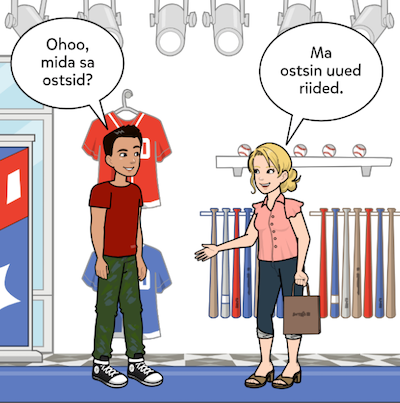
Mu sõber on kadunud!
- pikad juuksed
- krunn
- õlgadeni juuksed
- lühikesed juuksed
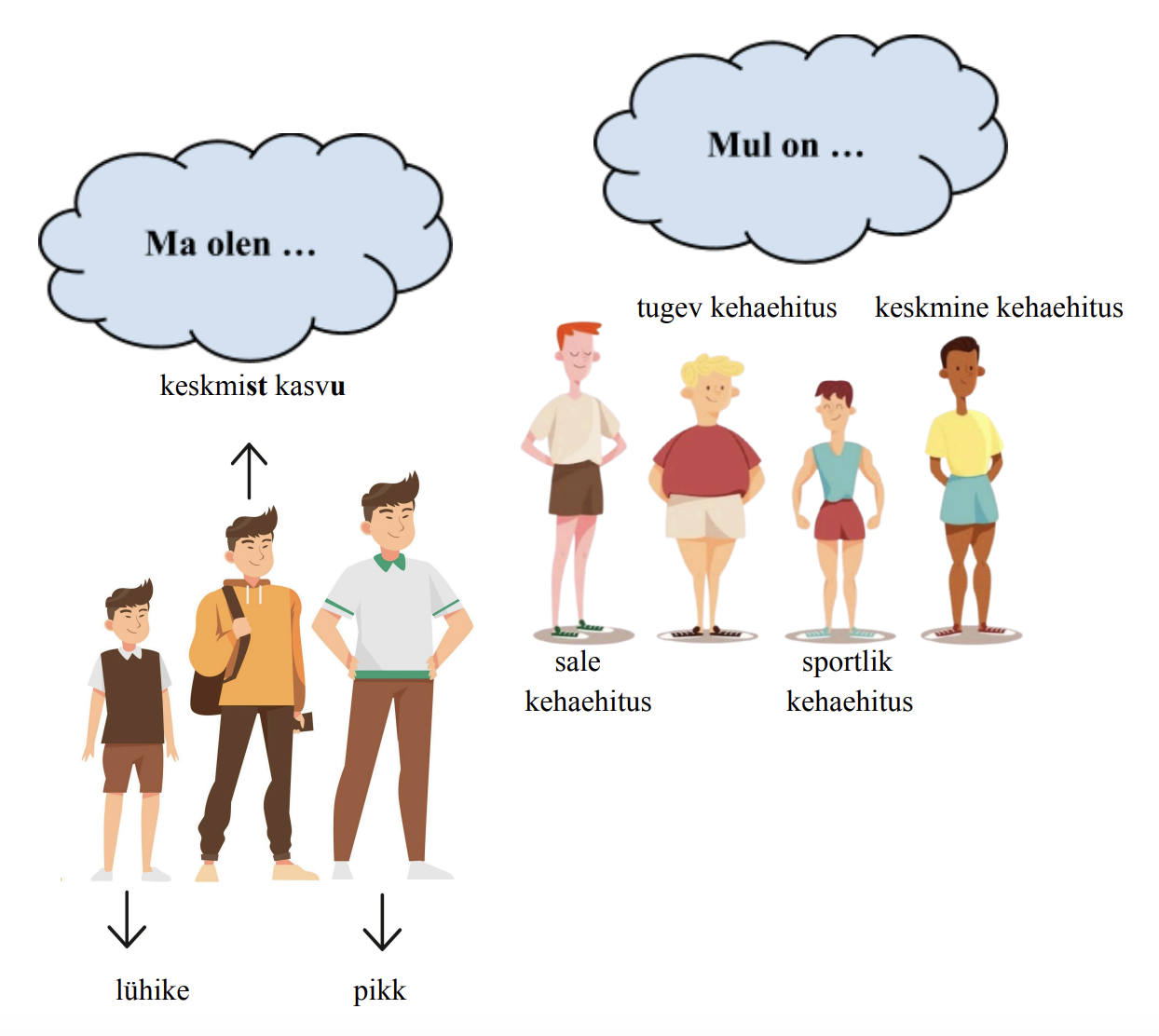
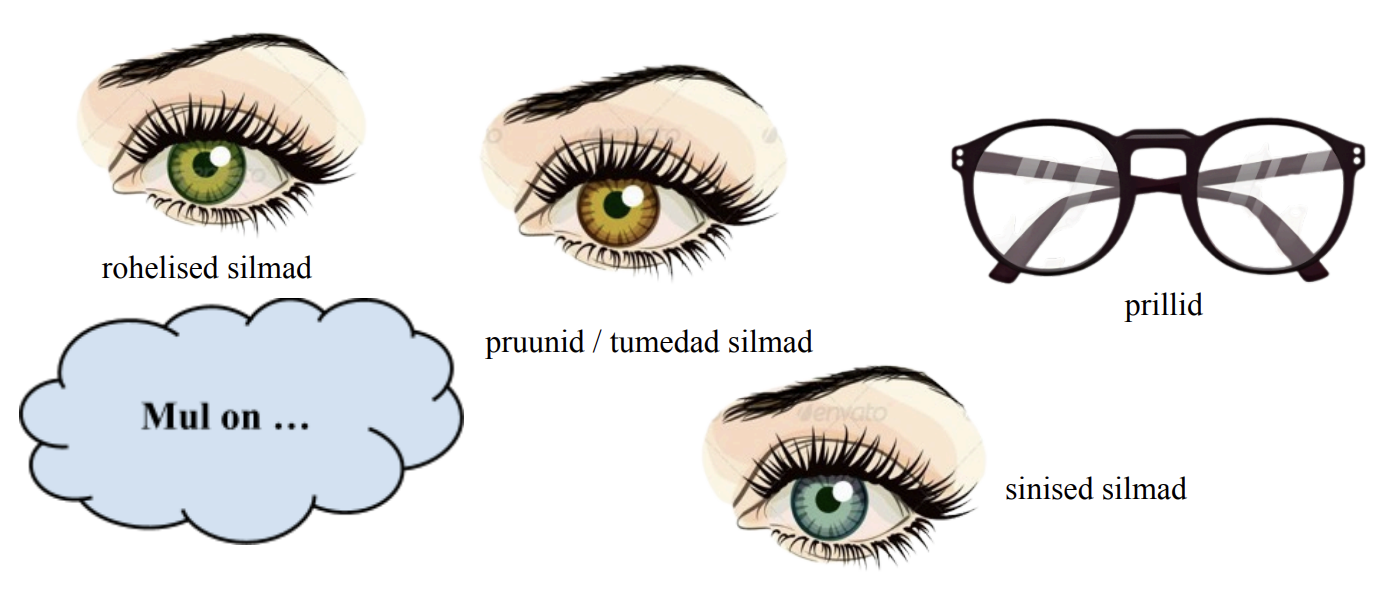
Vaata pilte ja vali õige vastus.
ENGLISH
Look at the pictures and choose the correct answer.
Poisil on kehaehitus.

Poisil on kehaehitus.

Poisil on kehaehitus.

Tüdruk on .
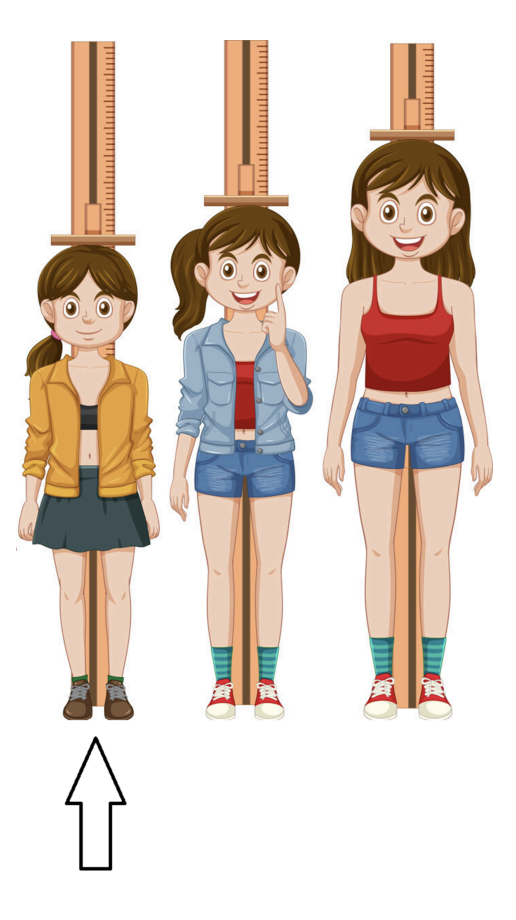
Tüdruk on .
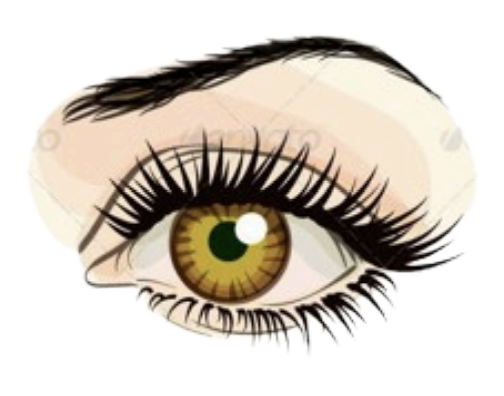
Tal on
PLURAL NOMINATIVE
In Estonian, when you talk about more than one thing, you must use the plural form of both the noun and its adjective. While in English, the plural is formed by adding (s) to the singular. In Estonian, to form the plural nominative (mitmuse nimetav):
- You take the 2nd form (genitive singular)
Then you add an ending: usually -d depending on the word
| I. Singular Nominative | II. Genitive | Plural Nominative |
|---|---|---|
| pluus | pluusi | pluusi + d |
| seelik | seeliku | seeliku + d |
| särk | särgi | särgi + d |
| jakk | jaki | jaki + d |
| kleit | kleidi | kleidi + d |
| jope | jope | jope + d |
Exercise 1.
Write the correct plural nominative form of the adjective + noun pair.
Example: punane pluus → punased pluusid
sinine särk → ________________________
roheline mantel → ________________________
must ülikond → ________________________
valge müts → ________________________
kollane kleit → ________________________
Exercise 2.
Choose the correct version of the phrase.
- 1.
- a) punane mütsid
- b) punased müts
- c) punased mütsid
- 2.
- a) sinised silm
- b) sinine silmad
- c) sinised silmad
- 3.
- a) must pluusid
- b) mustad pluus
- c) mustad pluusid
- 4.
- a) valged särkid
- b) valged särgid
- c) valge särgid
- 5.
- a) rohelised kleidid
- b) roheline kleidid
- c) rohelised kleit
- 6.
- a) pruun seelik
- b) pruunid seelik
- c) pruun seelikud
Roleplay: Politseijaoskonnas – Minu sõber on kadunud!
Task 1 – Reporting Your Friend Missing.
You go to the police station. Your friend is missing. Include at least one difficulty (example: you don’t remember their clothes, you’re nervous, or you're not sure where they went).
Task 2 – Giving a Detailed Description.
The police officer asks more questions. Describe your friend using “Tal on...” + hair, eyes, clothing, etc. Use colors and adjectives. Include a guess about where they might be.